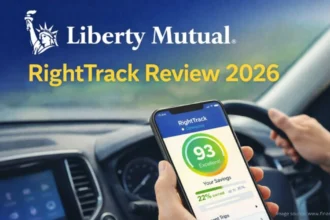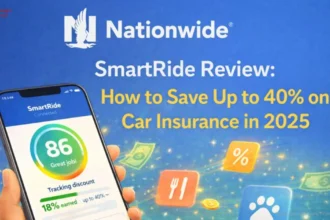Being “upside-down” on your car loan means you owe more on the loan than your car is worth. This negative equity situation makes it difficult to sell or trade in your car. Fortunately, there are several strategies to right-size your loan.
What is an Upside-Down Car Loan?
An upside-down car loan occurs when:
- The amount you owe on the loan is greater than the car’s current market value
- You have negative equity in the vehicle
For example, if you owe $15,000 on your car loan but your car is only worth $12,000, you are $3,000 upside-down.
How Does a Car Loan Become Upside-Down?
There are a few common ways a car loan ends up upside-down:
- Making little or no down payment
- Agreeing to a long loan term like 72-84 months
- Buying a vehicle with high depreciation
- Accepting a high-interest rate from the dealer
Since cars depreciate rapidly in the first year, not putting money down or having a long loan puts you at risk of owing more than it’s worth.
READ ALSO: Auto Insurance Rates By State in 2023: A Comprehensive Analysis
Problems with an Upside-Down Car Loan
Being upside-down on your car loan causes issues when you want to:
Trade-In or Sell Your Car
You would need to pay the difference to cover the negative equity before selling or trading in an upside-down car. Otherwise, you’d roll that amount into a new loan, making it easier to end up upside-down again.
Your Car is Totaled
If your upside-down car is totaled, your insurance company will only pay you the car’s depreciated value. You would then owe the difference, including any remaining negative equity.
So being upside-down means coming up with extra money when you dispose of the car. It also makes replacing the vehicle more complicated.
How to Tell if You’re Upside-Down
Follow these steps to determine if your car loan is currently upside-down:
1. Check Your Payoff Amount
Contact your lender and request a detailed payoff quote. This will show your exact remaining balance, including interest and fees.
2. Value Your Vehicle
Use the Kelley Blue Book (KBB) car value calculator to estimate your car’s trade-in and private party values. Get quotes from local dealers too.
3. Compare Vehicle Value to Payoff Amount
If your payoff amount is higher than the car’s value, you have negative equity and are upside-down. Subtract the value from your balance to calculate the amount.
Knowing whether you’re upside-down allows you to plan your next steps appropriately to resolve it.
Strategies to Get Right-Side Up on Your Loan

If you find yourself upside-down, here are 5 ways to get your car loan right-side up again:
1. Make Extra Principal Payments
Send additional payments to your lender, specifying that they should go straight to the principal. This reduces the amount owed faster. Even small amounts help.
2. Refinance Your Loan
Refinancing can lower your interest rate, reducing the total interest paid. You may also qualify for better terms that help you pay down principal faster. Shop around to see if refinancing helps improve your situation.
3. Voluntarily Surrender the Car
You can voluntarily surrender or give back the vehicle if you owe more than it’s worth. This damages your credit but discharges the leftover loan balance. Only consider if keeping the car isn’t an option.
4. Ride Out Your Loan Term
Simply continuing your regular payments until the loan matures is an option too. You’d own the vehicle free and clear at that point. So if you want to keep the car long-term, ride out the loan.
5. Buy Gap Insurance Coverage
Gap insurance covers the difference between your loan balance and what your standard auto insurance pays if your car gets totaled while upside-down. This prevents you from owing anything extra.
A combination strategy often works best. For example, making extra payments then refinancing after 6-12 months can help accelerate your progress.
To Recap
Being upside-down puts you in a tough financial spot but there are options to resolve it. Making extra payments, refinancing, and gap insurance provide solutions to get your car loan back above water over time.
Prevention is also key – aiming for at least a 20% down payment and shorter loan terms keeps subsequent loans right-side up. But if you do find yourself underwater on your auto loan, use the strategies outlined here to take control and reduce your negative equity.
Frequently Asked Questions (FAQs) About Upside-Down Car Loans
How long does it take to get right-side up on your car loan?
It depends on factors like your negative equity amount, interest rate, monthly payments, etc. But typically it takes about 1 year of consistent extra payments or 18-24 months without. Refinancing also speeds up the process.
Is gap insurance worth it if you’re upside-down?
Yes, gap insurance is extremely valuable when you have an upside-down loan. It protects you financially if your car gets totaled and prevents owing anything above your normal coverage. Costs range from $200-$800 depending on your location and provider.
Can you trade in a car if your loan is upside-down?
You can trade-in an upside-down car, but you’d need to pay off the negative equity first. Otherwise that amount gets added to your new auto loan. Coming up with extra money to cover the difference allows for a cleaner trade transaction.
Should I voluntarily surrender an upside-down car?
Voluntary surrender should only be considered as an absolute last resort if keeping or selling the vehicle privately isn’t an option. While it discharges the remaining loan balance, your credit score takes a major hit which negatively impacts your ability to qualify for future loans.
Is it bad to be upside-down on a car loan?
It’s not inherently bad, especially since nearly all loans start out upside-down due to rapid depreciation. It only causes issues if you want to sell, trade-in, or have an insurance claim on the vehicle before reaching positive equity. As long as you plan to keep the car long enough, being temporarily upside-down is normal.
Can you refinance an upside-down car loan?
Yes, lenders will often refinance upside-down car loans. The new lender essentially pays off your old loan and issues you a new one based on the vehicle’s current value. This allows you to get a lower rate and better loan terms compared to what you currently have.
Access our free Car Loan Calculator.





